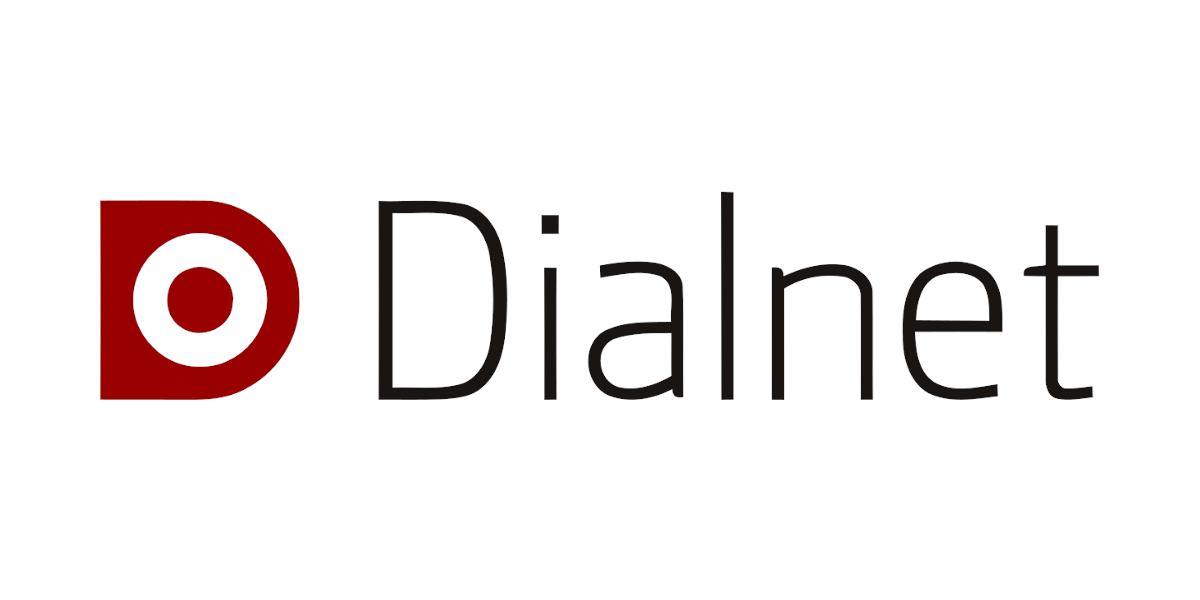Estimation model to relate soil factors associated with the presence and absence of Fusarium oxysporumSchltdl in the cape gooseberry crop Physalis peruvianaL
DOI:
https://doi.org/10.55996/dekamuagropec.v3i2.95Keywords:
APC, decision tree, predisposing factors, supervised modelsAbstract
The pathogen Fusarium oxysporum is the major limiting factor in the production of the cape gooseberry crop Physalis peruviana, due to the inexperience of growers to identify and manage it. The objective of this research was to identify the relationship between the chemical characteristics of the soil and the presence and absence of Fusarium oxysporum. Soil samples were collected from 100 cape gooseberry production units. This process was carried out in plots with healthy plants and plants affected by the pathogen Fusarium oxysporum Schltdl. Descriptive analysis, Pearson correlations, principal components (PCA) and Machine Learning models were used to analyze the information associated with the chemical elements of the soil of cape gooseberry farms. The Decision Tree Classifier model showed the best predictive performance with Accuracy metrics of 0.58, Recall of 0.57, and F1 Score of 0.51, allowing to establish that the presence of F. oxysporum is associated with elements such as: Ca, K, Effective Cation Exchange Capacity (ETC), pH and % Sand. Finally, the development of this work is intended to outline predictive models as a tool that can be included in management plans for this disease.
Downloads
References
Ali, M. (2020). PyCaret: An open source, low-code machine learning library in Python. PyCaret version, 2.
Abdulridha, J., Ampatzidis, Y., Ehsani, R. y de Castro, A. I. (2018). Evaluating the performance of spectral features and multivariate analysis tools to detect laurel wilt disease and nutritional deficiency in avocado. Computers and Electronics in Agriculture, 155, 203–211. https://doi.org/https://doi.org/10.1016/j.compag.2018.10.016
Aworka, R., Cedric, L. S., Adoni, W. Y. H., Zoueu, J. T., Mutombo, F. K., Kimpolo, C. L. M., Nahhal, T. y Krichen, M. (2022). Agricultural decision system based on advanced machine learning models for yield prediction: Case of East African countries. Smart Agricultural Technology, 2, 100048. https://doi.org/https://doi.org/10.1016/j.atech.2022.100048
Asociación Nacional de Comercio Exterior (ANALDEX). (2021). Exportaciones de uchuva 2016. En línea: http://www.analdex.org/wp-content/uploads/2017/02/Informe-Uchuva-2017-SE.pdf.
Asociación Nacional de Comercio Exterior (ANALDEX). (2021). Mercado de la uchuva. En línea: http://www.analdex.org/2018/02/26/mercado-de-la-uchuva/.
Bansal, M., Goyal, A. y Choudhary, A. (2022). A comparative analysis of K-Nearest Neighbor, Genetic, Support Vector Machine, Decision Tree, and Long Short Term Memory algorithms in machine learning. Decision Analytics Journal, 3, 100071. https://doi.org/https://doi.org/10.1016/j.dajour.2022.100071
Bansal, M., Prince, Yadav, R. y Ujjwal, P. K. (2020). Palmistry using Machine Learning and OpenCV. 2020 Fourth International Conference on Inventive Systems and Control (ICISC), 536–539. https://doi.org/10.1109/ICISC47916.2020.9171158
Bautista, E., Quirama, J. y Bautista, E. (2021). Modelo predictivo del progreso en el aprendizaje de los estudiantes de uniminuto aplicando técnicas de machine learning. Conrado, 17(83), 305-310. Epub 10 de diciembre de 2021. Recuperado en 15 de octubre de 2022, de http://scielo.sld.cu/scielo.php?script=sci_arttext&pid=S1990-86442021000600305&lng=es&tlng=es.
Beckman, C., and E. Roberts. (1995). On the nature and generic basis for resistance and tolerance to wilt diseases of plants. Advanced Botanical Research 24(3): 35-77.
Borges-Pérez, A., Trujillo, J. D. C., Gutiérrez Jerez, F. y Angulo Rodríguez, D. (1983). Estudio sobre el Mal de Panamá en las Islas Canarias. II. Influencia de los desequilibrios nutritivos P-Zn y K-Mg del suelo, en la alteración de los mecanismos de resistencia de la platanera (Cavendish enana) al Mal de Panamá.
Calvo Vélez, P., Reymundo Meneses, L. y Zúñiga Dávila, D. (2008). Estudio de las poblaciones microbianas de la rizósfera del cultivo de papa (Solanum tuberosum) en zonas altoandinas. Ecología Aplicada, 7(1-2), 141-148.
Castro León, J. A., Penagos Díaz, L. y Salgado Úsuga, S. T. (2020). Estudio de viabilidad para exportar uchuva hacia Estados Unidos.
Domínguez-Hernández, J. D., Negrín-Medina, M. A. y Rodríguez-Hernández, C. M. (2010). Potassium Selectivity in Transported Volcanic Soils (Sorribas) under Banana Cultivation in Relation to Banana-Wilt Expression Caused by Fusarium oxysporumf. sp. Cubense. Communications in Soil Science and Plant Analysis, 41(14), 1674–1692. https://doi.org/10.1080/00103624.2010.489133
EMBRAPA (Centro Nacional de Pesquisa de Mandioca e Fruticultura Tropical). (1987). Relatório técnico do Centro Nacional de Pesquisa de Mandioca e Fruticultura –1986. Cruz das Almas, Brasil. en: https://www.agronet.gov.co/Documents/39-UCHUVA_2017.pdf. (con acceso 07/09/2022).
Estupiñán Rodríguez, H. y Ossa Canencio, J. A. (2007). Efecto del agente causal de la marchitezvascular de la uchuva (Physalis peruvianaL.) el hongo Fusarium oxysporum schlecht, sobre algunas solanáceas y otras especies cultivadas afectadas por formas especiales del microorganismo. En: https://repository.javeriana.edu.co/handle/10554/8319.
Forero de La-Rotta y Quevedo. (2005). Marchitamiento vascular en uchuva (Physalis peruvianaL.) ocasionada por Fusarium oxysporum. En: resúmenes XXVI congreso de ASCOLFI. Bogotá octubre 5-7. 70p.
Gallardo Correa, A. (2006). Geostadística. Ecosistemas, Vol. 15, n. 3 (sept.-dic. 2006); pp. 48-58.
Garzón, C., Cortés, C. A., y Camacho-Tamayo, J. H. (2010). Variabilidad espacial de algunas propiedades químicas en un Entisol. Revista UDCA Actualidad y Divulgación Científica, 13(1), 87-95.
Góngora Salgado, A. C. y Rojas Gracia, P. (2006). Incidencia de las enfermedades en uchuva Physalis peruviana L., por estado fenológico y de acuerdo con la ubicación en los diferentes estratos de la planta, en el departamento de Cundinamarca. Trabajo de grado Microbiología Agrícola y Veterinaria. Fac. Ciencias Biológicas, Pontificia Universidad Javeriana, Bogotá. 87p.
Gupta, P. y Sehgal, N. K. (2021). Introduction to Machine Learning in the Cloud with Python: Concepts and Practice. In Introduction to Machine Learning in the Cloud with Python. Springer International Publishing. https://doi.org/10.1007/978-3-030-71270-9
Haglund, W. y J. Kraft (2001). Fusarium wilt. p. 14-16. In: Kraft, J.M. and Pfleger, F.L. (eds.). Compendium of pea diseases and pests. The American Phytopatological Society Press, Minnesota, USA. 84 p.
Hassan, H. A., Serag, H. M., Qadir, M. S. y Ramadan, M. F. (2017). Cape gooseberry (Physalis peruviana) juice as a modulator agent for hepatocellular carcinoma-linked apoptosis and cell cycle arrest. Biomedicine y Pharmacotherapy, 94, 1129-1137.
Hawkesford, M., Horst, W., Kichey, T., Lambers, H., Schjoerring, J., Møller, I. S. y White, P. (2011). Functions of Macronutrients. In Marschner’s Mineral Nutrition of Higher Plants: Third Edition (pp. 135–189). Elsevier Inc. https://doi.org/10.1016/B978-0-12-384905-2.00006-6
Huber, D., Römheld, V. y Weinmann, M. (2011). Relationship between Nutrition, Plant Diseases and Pests. In Marschner’s Mineral Nutrition of Higher Plants: Third Edition (pp. 283–298). Elsevier Inc. https://doi.org/10.1016/B978-0-12-384905-2.00010-8
Hwang, S. (1985). Ecology and control of fusarial wilt of banana. Plant Protection Bulletin 27(3): 233-245.
Kaliyadan, F. y Kulkarni, V. (2019). Types of Variables, Descriptive Statistics, and Sample Size. Indian Dermatology Online Journal, 10(1). https://journals.lww.com/idoj/Fulltext/2019/10010/Types_of_Variables,_Descriptive_Statistics,_and.19.aspx
Jhuria, M., Kumar, A. y Borse, R. (2013). Image processing for smart farming: Detection of disease and fruit grading. 2013 IEEE Second International Conference on Image Information Processing (ICIIP-2013), 521–526. https://doi.org/10.1109/ICIIP.2013.6707647.
Ochoa Fuentes, Y. M., Cerna Chávez, E., Gallegos Morales, G., Landeros Flores, J., Delgado Ortiz, J. C., Hernández Camacho, S. y Olalde Portugal, V. (2012). Identificación de especies de Fusarium en semilla de ajo en Aguascalientes, México. Revista mexicana de micología, 36, 27-32.
Orr, R. y Nelson, P. N. (2018). Impacts of soil abiotic attributes on Fusarium wilt, focusing on bananas. Applied Soil Ecology, 132, 20–33. https://doi.org/https://doi.org/10.1016/j.apsoil.2018.06.019
Panigrahi, R. y Borah, S. (2018). Rank Allocation to J48 Group of Decision Tree Classifiers using Binary and Multiclass Intrusion Detection Datasets. Procedia Computer Science, 132, 323–332. https://doi.org/https://doi.org/10.1016/j.procs.2018.05.186
Prieto Morante, J. S. y Trelles Prieto, R. L. (2021). Clasificación de hojas de tomate con plagas o enfermedades usando una máquina de soporte vectorial (SVM). Tomado de https://pirhua.udep.edu.pe/bitstream/handle/11042/4940/T_IME_2103.pdf?sequence=1 (2019).
Pujari, D., Yakkundimath, R. y Byadgi, A. S. (2016). SVM and ANN based classification of plant diseases using feature reduction technique. IJIMAI, 3(7), 6-14.
R Core Team (2017) R: a language and environment for statistical computing. R Foundation for Statistical Computing. https://www.R-project.org/.
Restrepo, L., Posada, S. y Noguera, R. (2012). Application of the principal-component analysis in the evaluation of three grass varieties. Revista Colombiana de Ciencias Pecuarias, 25, 258–266. http://www.scielo.org.co/scielo.php?script=sci_arttext&pid=S0120-06902012000200011&nrm=iso
Rodríguez‐Molina, M. C., Medina, I., Torres‐Vila, L. M. y Cuartero, J. (2003). Vascular colonization patterns in susceptible and resistant tomato cultivars inoculated with Fusarium oxysporum f. sp. lycopersici races 0 and 1. Plant Pathology, 52(2), 199-203.
Rovetta, A. (2020). Raiders of the Lost Correlation: A Guide on Using Pearsonand Spearman Coefficients to Detect Hidden Correlations in Medical Sciences. Cureus. https://doi.org/10.7759/cureus.11794
Roveda, G., Peñaranda, A., Ramírez, M., Baquero, I. y Galindo, R. (2012). Diagnóstico de la fertilidad química de los suelos de los municipios de Granada y Silvania para la producción de uchuva en Cundinamarca. In Revista Corpoica-Ciencia y Tecnología Agropecuaria (Vol. 13, Issue 2).
Sanogo, S. y Yang, X. B. (2001). Relation of sand content, pH, and potassium and phosphorus nutrition to the development of sudden death syndrome in soybean. Canadian Journal of Plant Pathology, 23(2), 174–180. https://doi.org/10.1080/07060660109506927
Sidey-Gibbons, J. A. M. y Sidey-Gibbons, C. J. (2019). Machine learning in medicine: a practical introduction. BMC Medical Research Methodology, 19(1), 64. https://doi.org/10.1186/s12874-019-0681-4
Somogyi, Z. (2021). The Application of Artificial Intelligence: Step-by-Step Guide from Beginner to Expert. In The Application of Artificial Intelligence. Springer International Publishing. https://doi.org/10.1007/978-3-030-60032-7
Sun, S. y Huang, V. (1985). Formulated soil amendment for controlling Fusarium wilt and other soil-borne diseases. Plant Disease 69(11): 917-920.
Tandera, T., Suhartono, D., Wongso, R. y Prasetio, Y. L. (2017). Personality prediction system from facebook users. Procedia computer science, 116, 604-611.
Trujillo,I., Gutierrez, F. y Borges, A. (1983). Estudio sobre el mal de Panamá en las Islas Canarias. III. Relaciones entre parámetros físicos y químicos de los suelos. Fruits 38(11): 759-764.
Downloads
Additional Files
Published
How to Cite
Issue
Section
License
Copyright (c) 2022 Dékamu Agropec Scientific Journal

This work is licensed under a Creative Commons Attribution-NonCommercial 4.0 International License.
Los autores que publican en esta revista aceptan los siguientes términos:
- Los autores conservan los derechos de autor y conceden a la revista el derecho publicación con la obra, simultáneamente licenciada bajo una licencia de Creative Commons CC By que permite a otros compartir el trabajo, pero citando la publicación inicial en esta revista.
- Los autores pueden celebrar acuerdos contractuales adicionales separados para la distribución no exclusiva de la versión publicada de la obra de la revista (por ejemplo, publicarla en un repositorio institucional o publicarla en un libro), pero citando la publicación inicial en esta revista.
- Se permite y anima a los autores a publicar su trabajo en línea (por ejemplo, en repositorios institucionales o en su sitio web) antes y durante el proceso de presentación, ya que puede conducir a intercambios productivos, así como una mayor citación del trabajo publicado (https://web-archive.southampton.ac.uk/opcit.eprints.org/oacitation-biblio.html)















